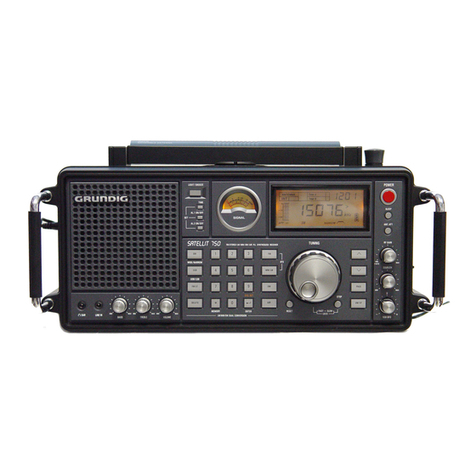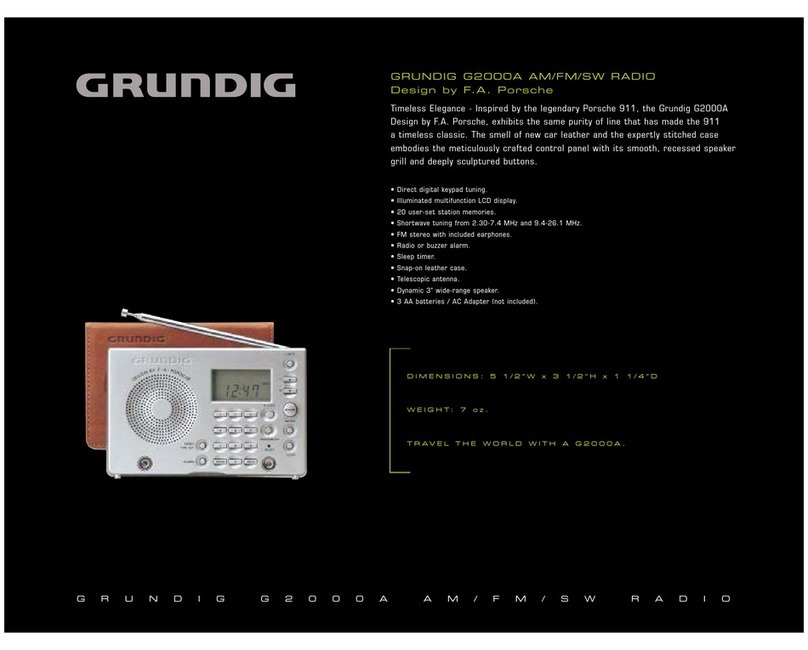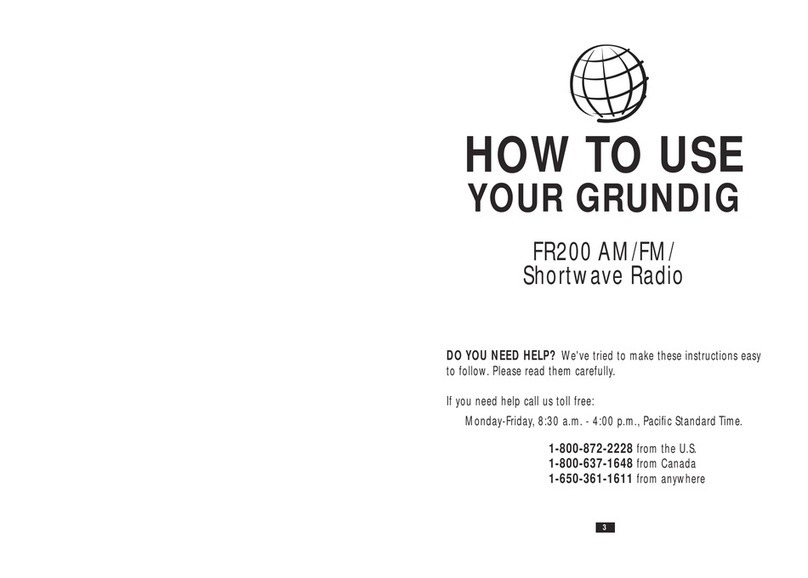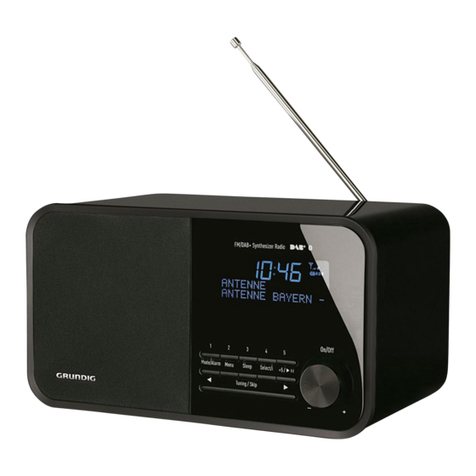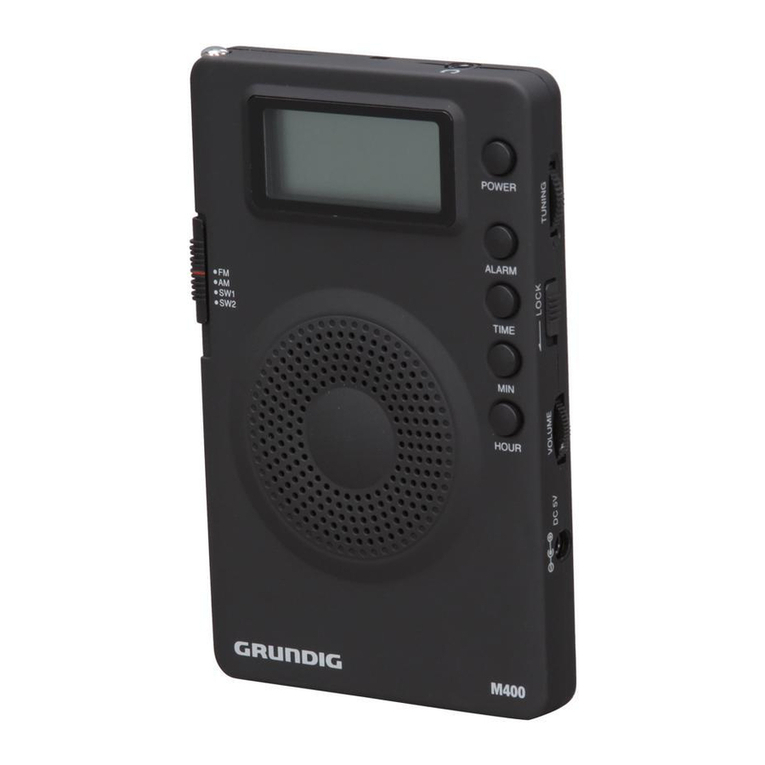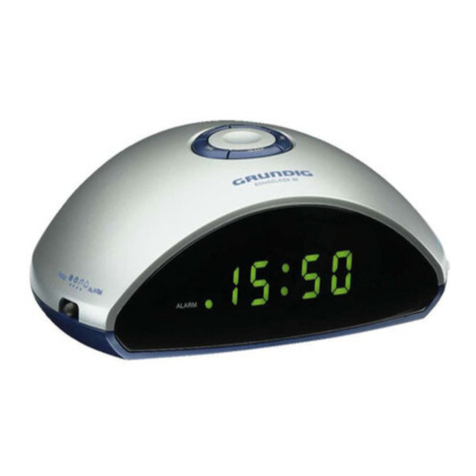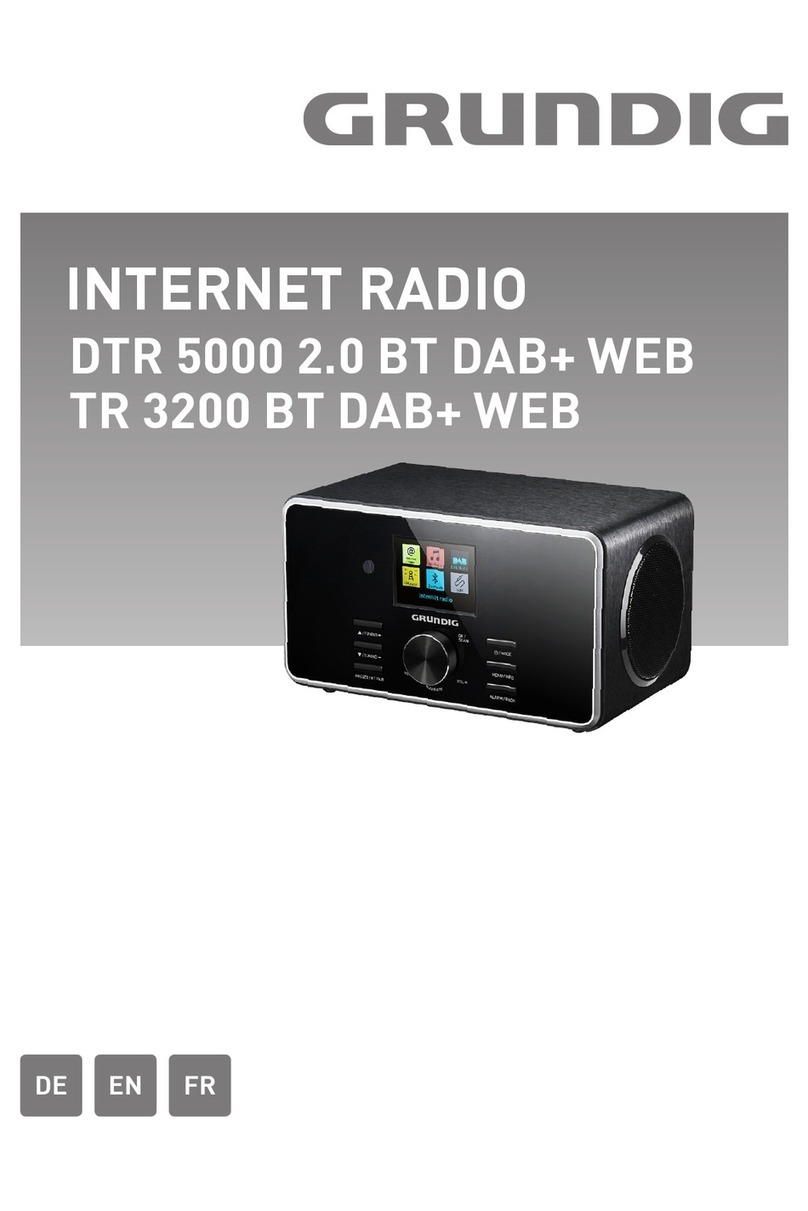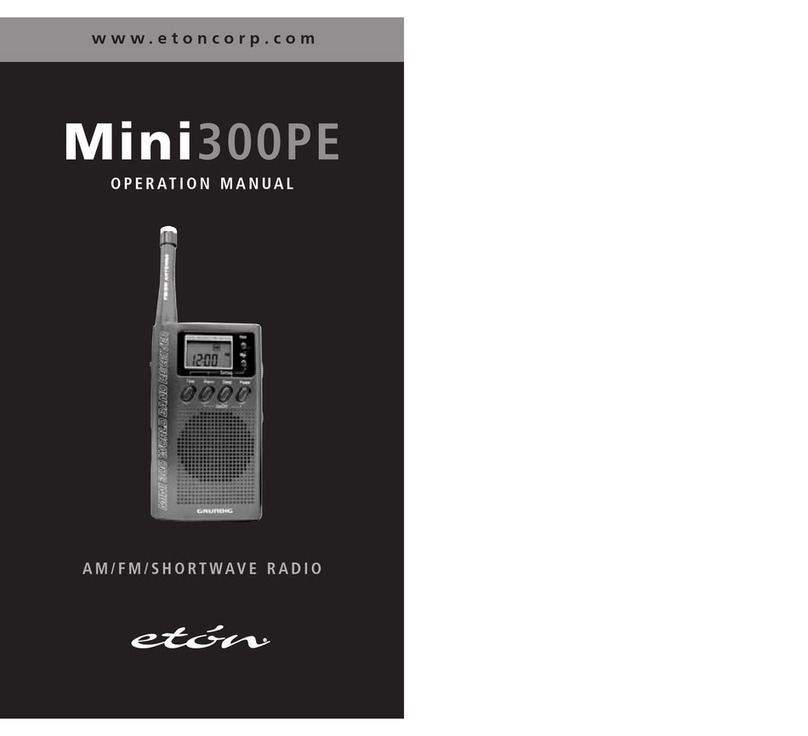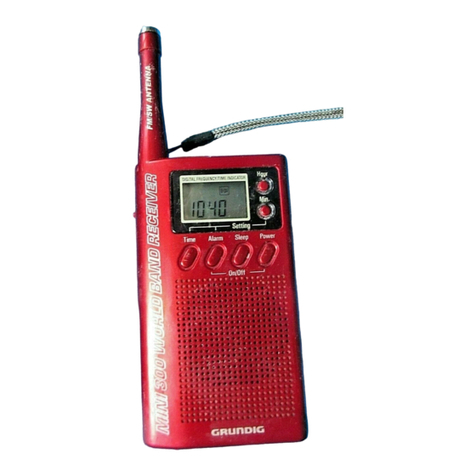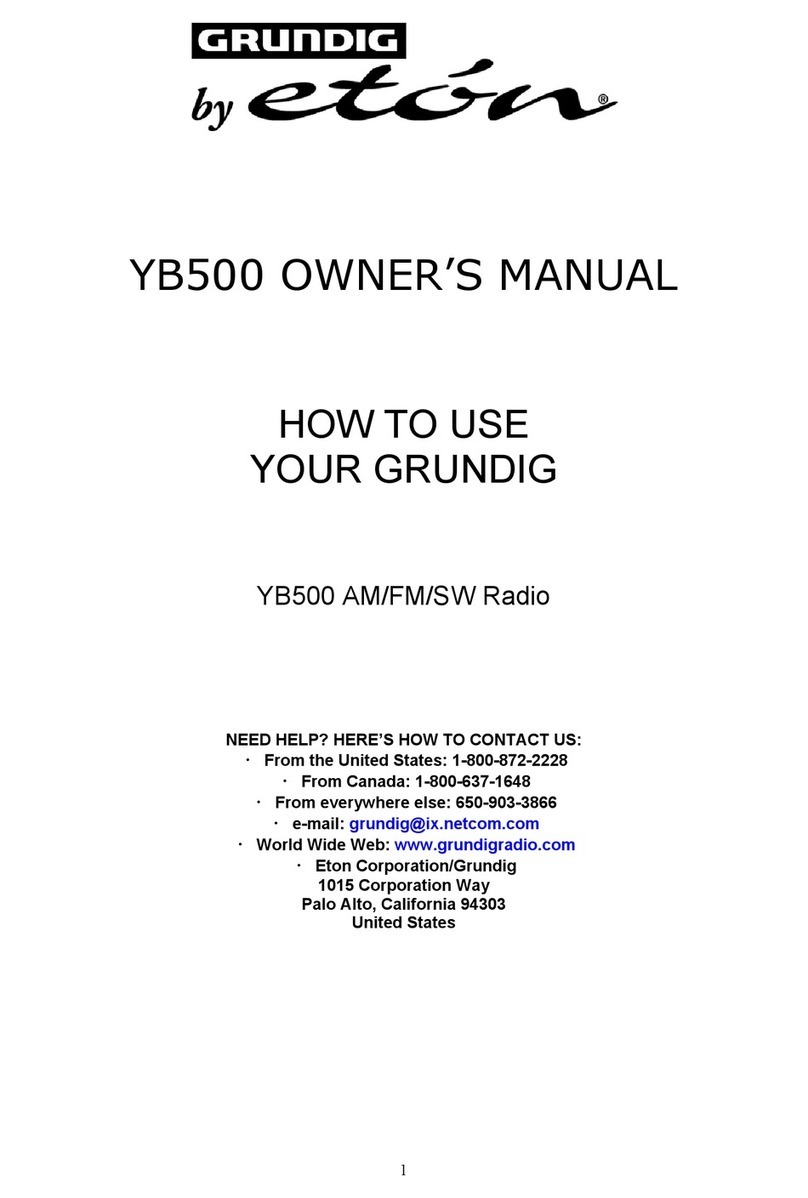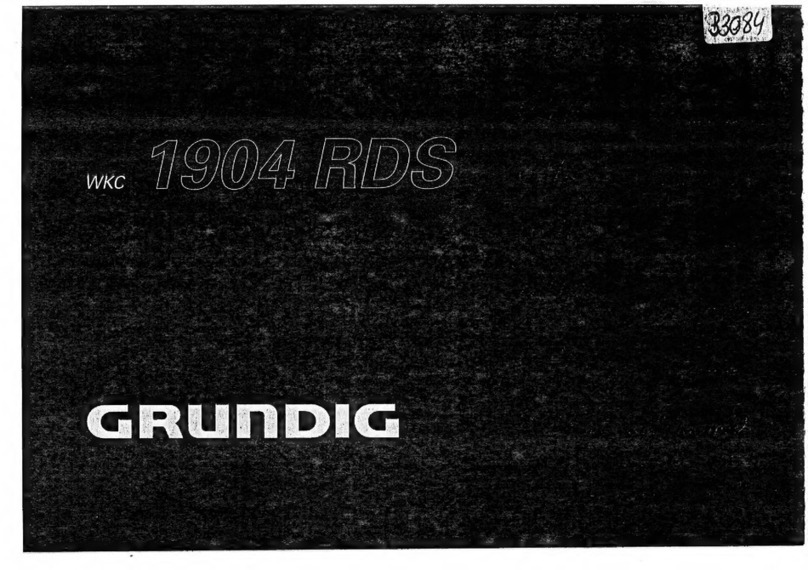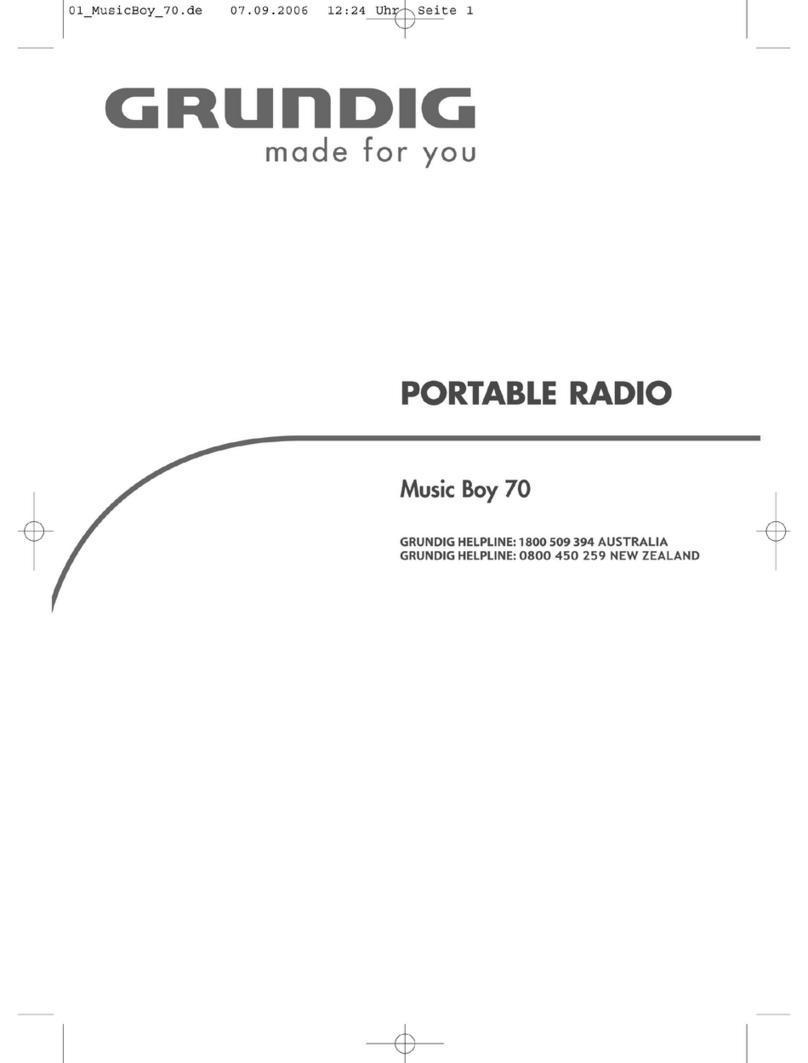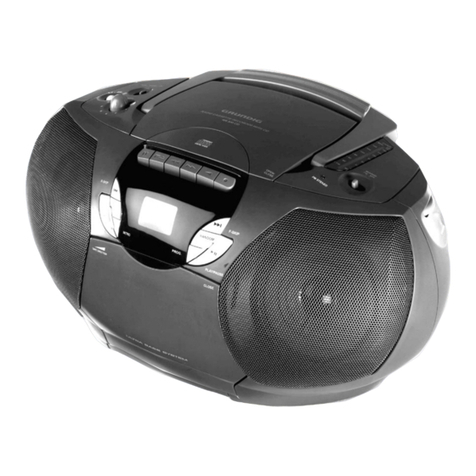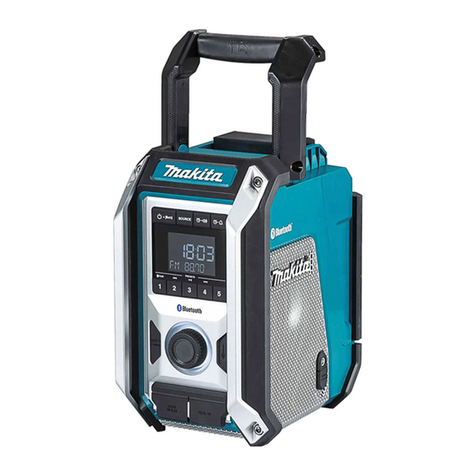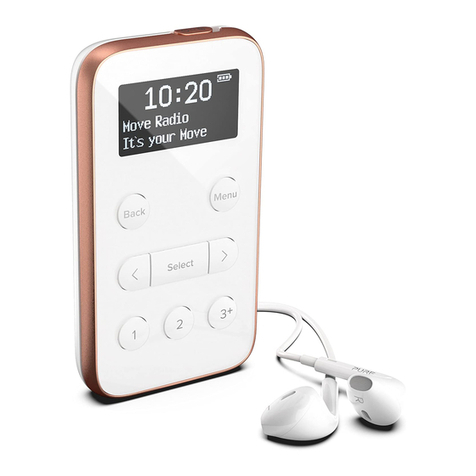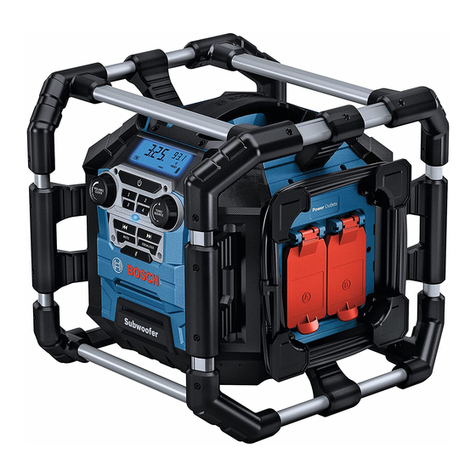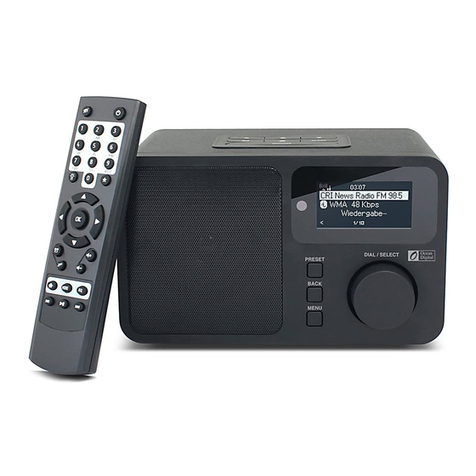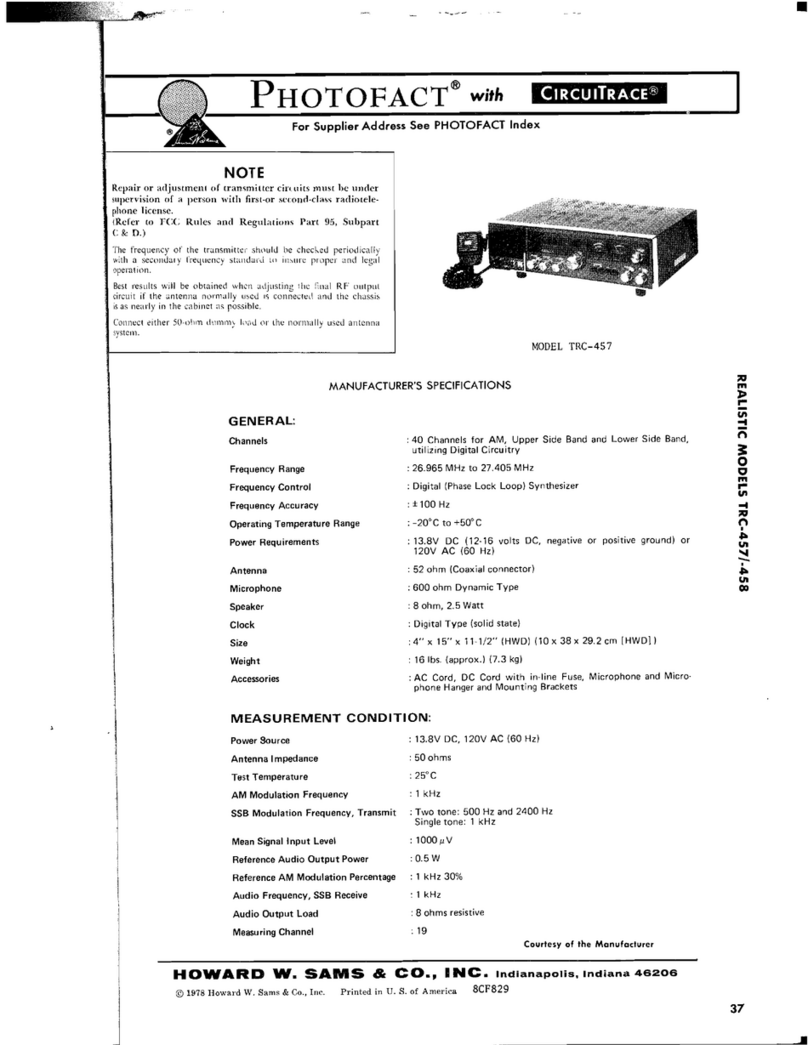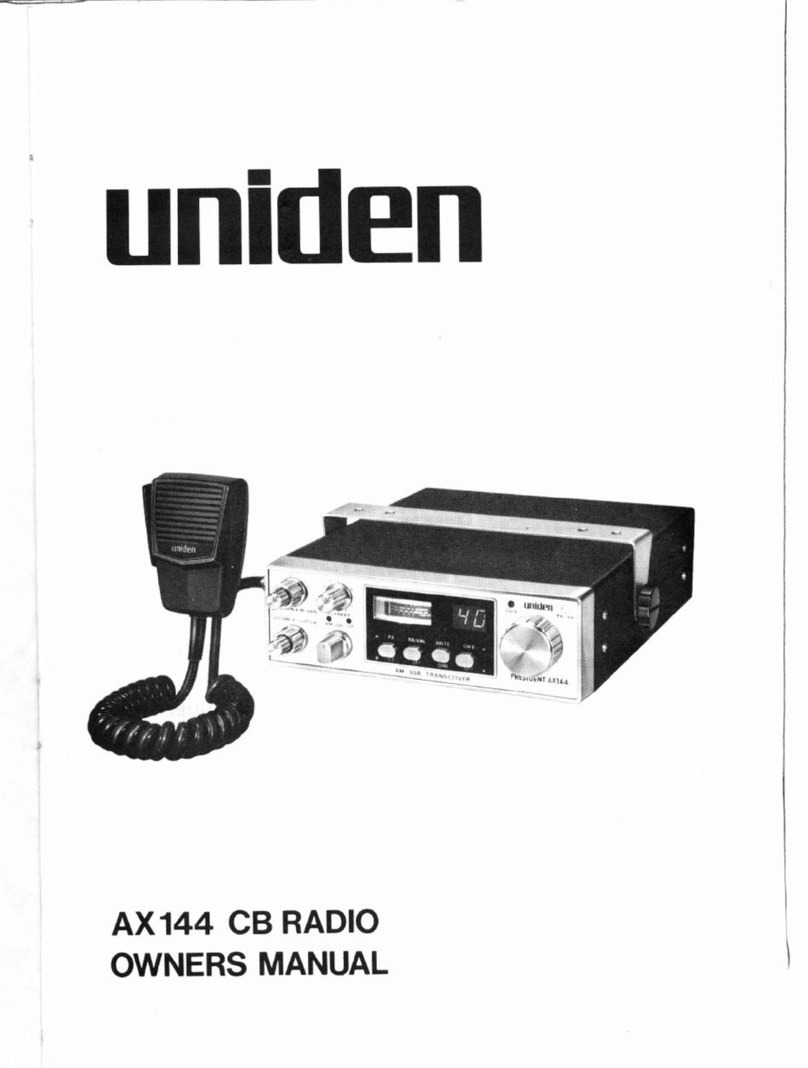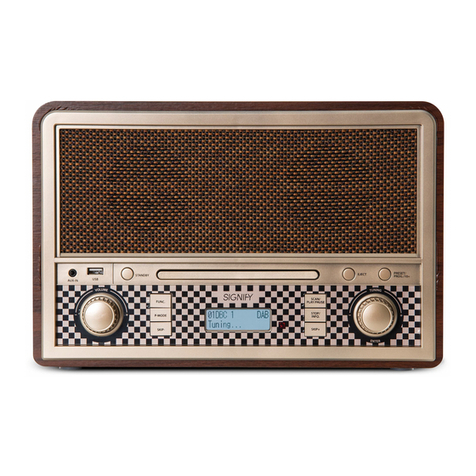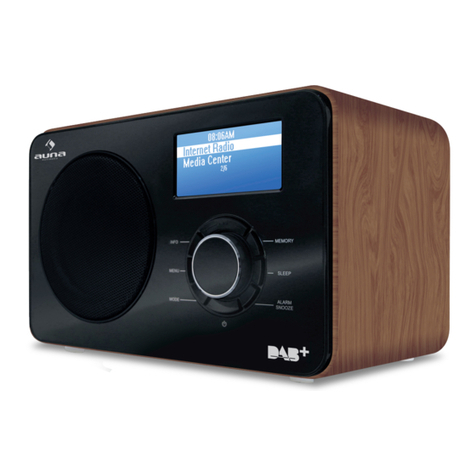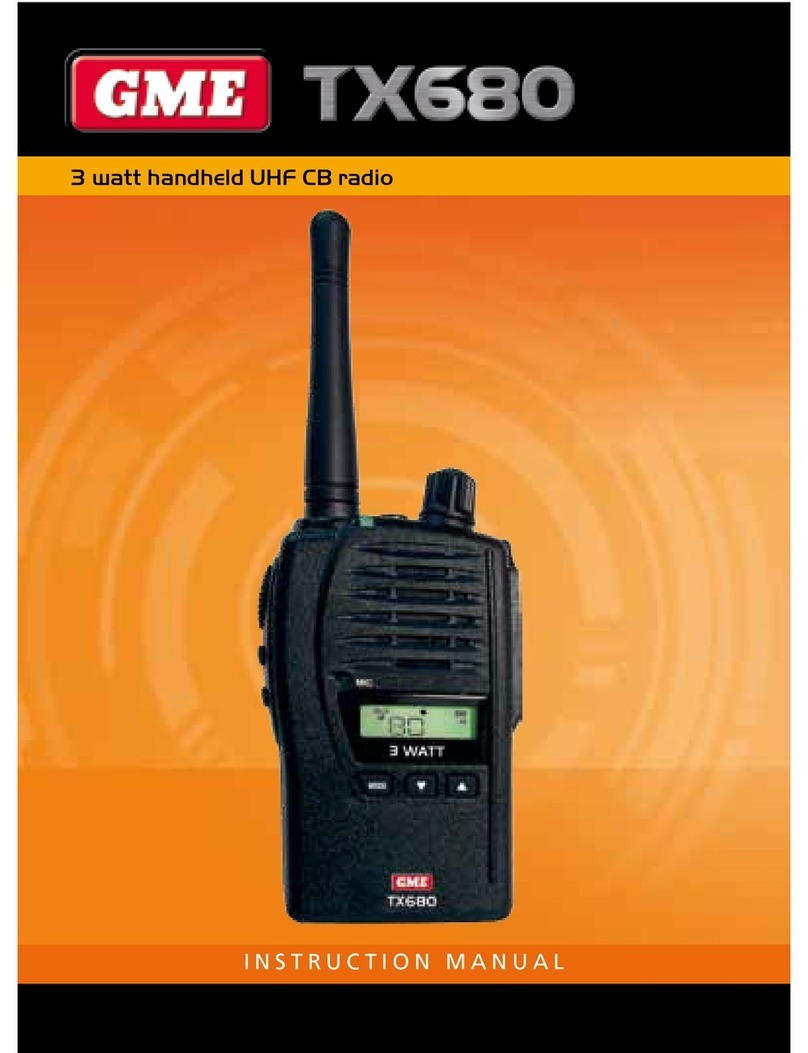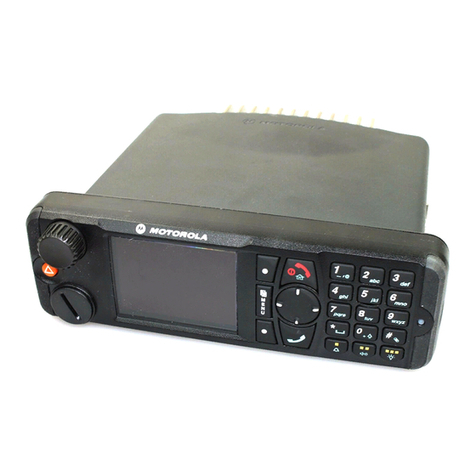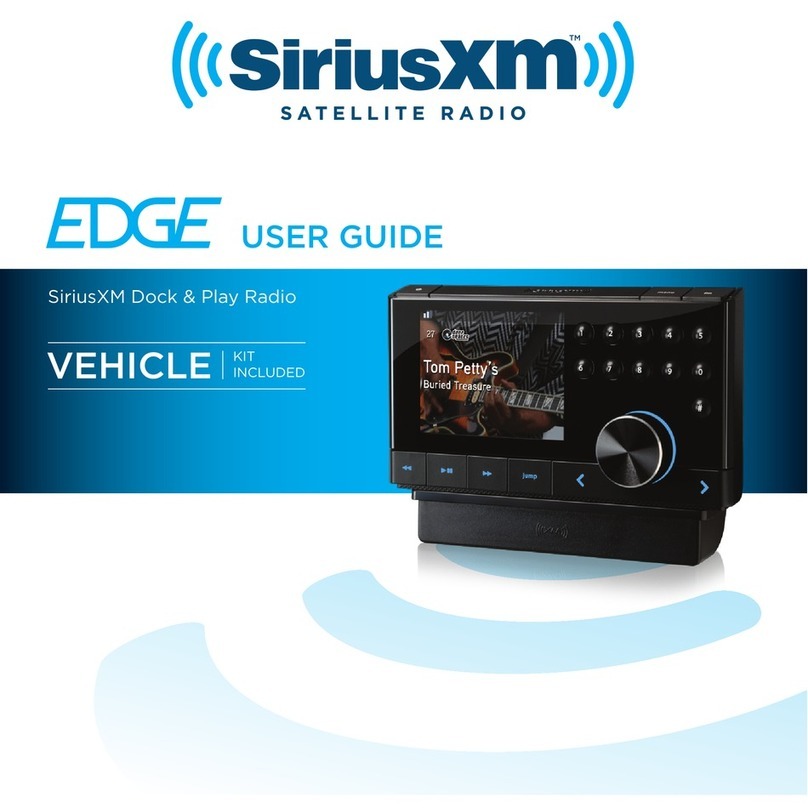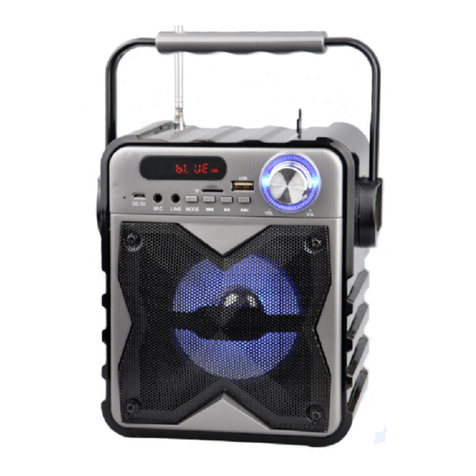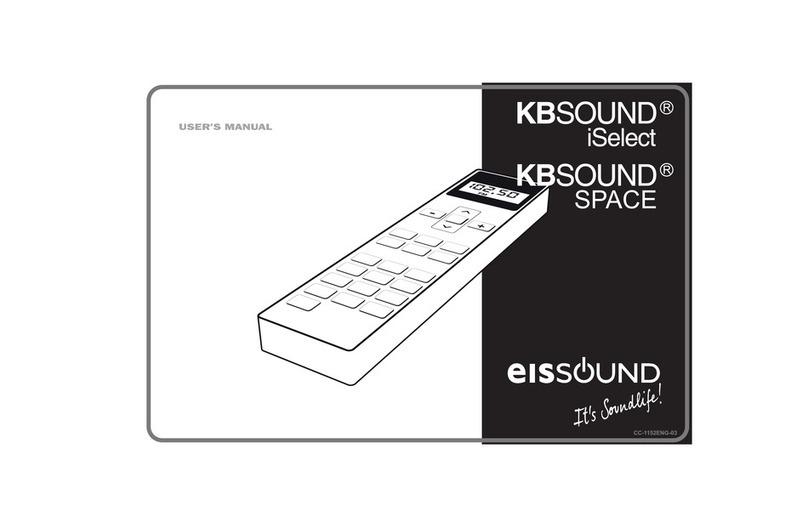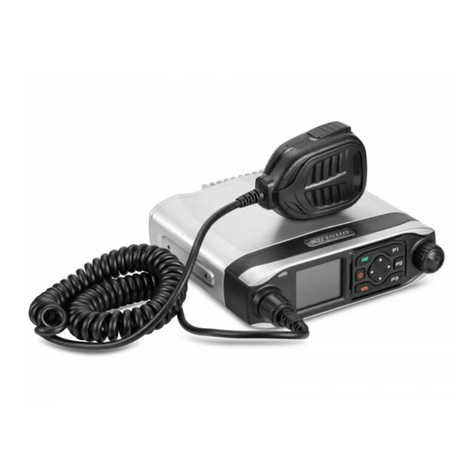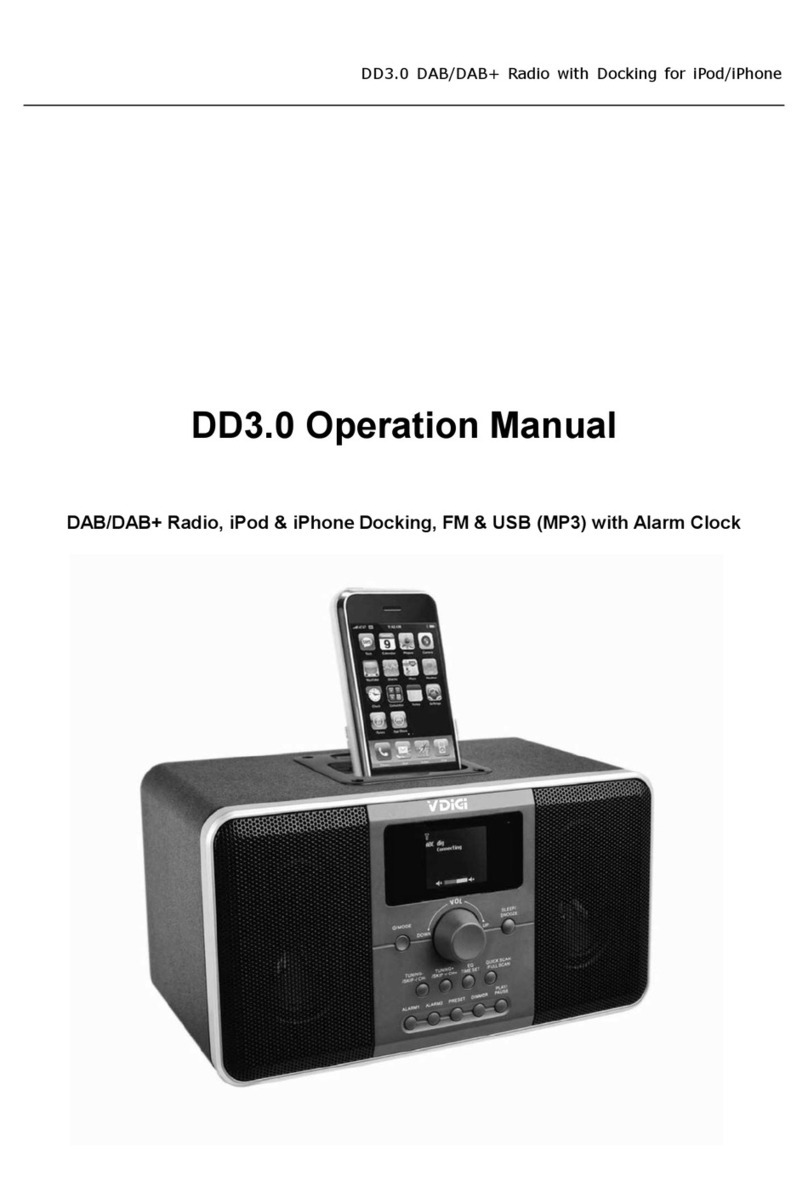G4000A OPERAT ON MANUAL
19
WHAT COUNTRIES ARE HEARD
ON SHORTWAVE RADIO?
The next chart shows some of the countries targeting
North America with their broadcasts. Unless otherwise
noted, frequencies are for evening listening in North
America. Other countries do not deliberately target
North America, but can be heard anyway. Whether or
not a country can be heard depends on many factors,
including signal strength, your geographic location,
and the condition of the earth’s ionosphere.
Frequencies in BOLD are mainly used for the country’s
native language broadcast.
WHAT IS HEARD ON SHORTWAVE
RADIO?
• International foreign broadcasts, many targeting
North America
• Long distance two-way amateur radio, maritime,
and aeronautical communications
MORE NFORMAT ON ABOUT SHORTWAVE continued
18
MORE NFORMAT ON ABOUT SHORTWAVE continued
The construction materials of some buildings simply
do not let signals in very well. Signals penetrate
wood frame buildings easiest, while concrete and
brick buildings usually block signals. If you are in a
building with one or more stories above you, signals
can also be impaired in strength. In such a situation,
position yourself, and especially the radio’s antenna,
as close to a window as possible while listening.
Below is a list of the shortwave bands used for
international broadcasts and their corresponding
frequencies. Since some radios show frequency in
megahertz and some in kilohertz, both are shown
here. The G4000A shows shortwave frequencies
in kilohertz.
BAND MEGAHERTZ (MHz) K LOHERTZ (KHz)
11m 25.67-26.10 MHz 25670-26100 KHz
13m 21.45-21.50 MHz 21450-21850 KHz
16m 17.55-17.90 MHz 17550-17900 KHz
19m 15.10-15.60 MHz 15100-15600 KHz
22m 13.60-13.80 MHz 13600-13800 KHz
25m 11.65-12.05 MHz 11650-12050 KHz
31m 9.500-9.900 MHz 9500-9900 KHz
41m 7.100-7.300 MHz 7100-7300 KHz
49m 5.950-6.200 MHz 5950-6200 KHz
60m 4.750-5.060 MHz 4750-5060 KHz
75m 3.900-4.000 MHz 3900-4000 KHz
90m 3.200-3.400 MHz 3200-3400 KHz
120m 2.300-2.490 MHz 2300-2490 KHz
COUNTRY BROADCAST
Australia (Radio Australia) 9580, 9860, 15365, 17795
Austria (Radio Austria International) 6015, 9655
Canada (Radio Canada International) 5960, 6120, 9755
China (China Radio International) 9690, 9780, 11680, 11715, 11840
Cuba (Radio abana) 6060, 6080, 6180, 9510, 9820
Ecuador ( CJB-voice of the Andes) 9745, 11925, 12005, 15140
France (Radio France International) 5920, 5945, 9790, 9800
Germany (Deutsche Welle) 5960, 6040, 6045, 6075, 6085, 6100, 6120, 6145, 6185, 9515, 9565,
9535, 9640, 9545, 9650, 9670, 9700, 9730, 9735, 11705, 11740, 11750,
11810, 11865, 13780, 15275, 15410, 17810, 17860
olland (Radio Nederland) 6020, 6025, 6165, 9590, 9715, 9840, 9895, 11655
Japan (Radio Japan/N K) 5960, 6025, 9610, 9680, 9725, 11885, 11895, 15230
Russia (Radio Moscow International) 7105, 7115, 7150, 7270, 9750, 9765, 11805, 11840, 12050, 15410, 15425
Taiwan (Voice of Free China) 5950, 9680, 11740, 11855, 15440
United Kingdom (BBC World Service) Morning: 5965, 6195, 9515, 9740, 11750, 17840
Evening: 5975, 6175, 7325, 9590, 9640, 15260


